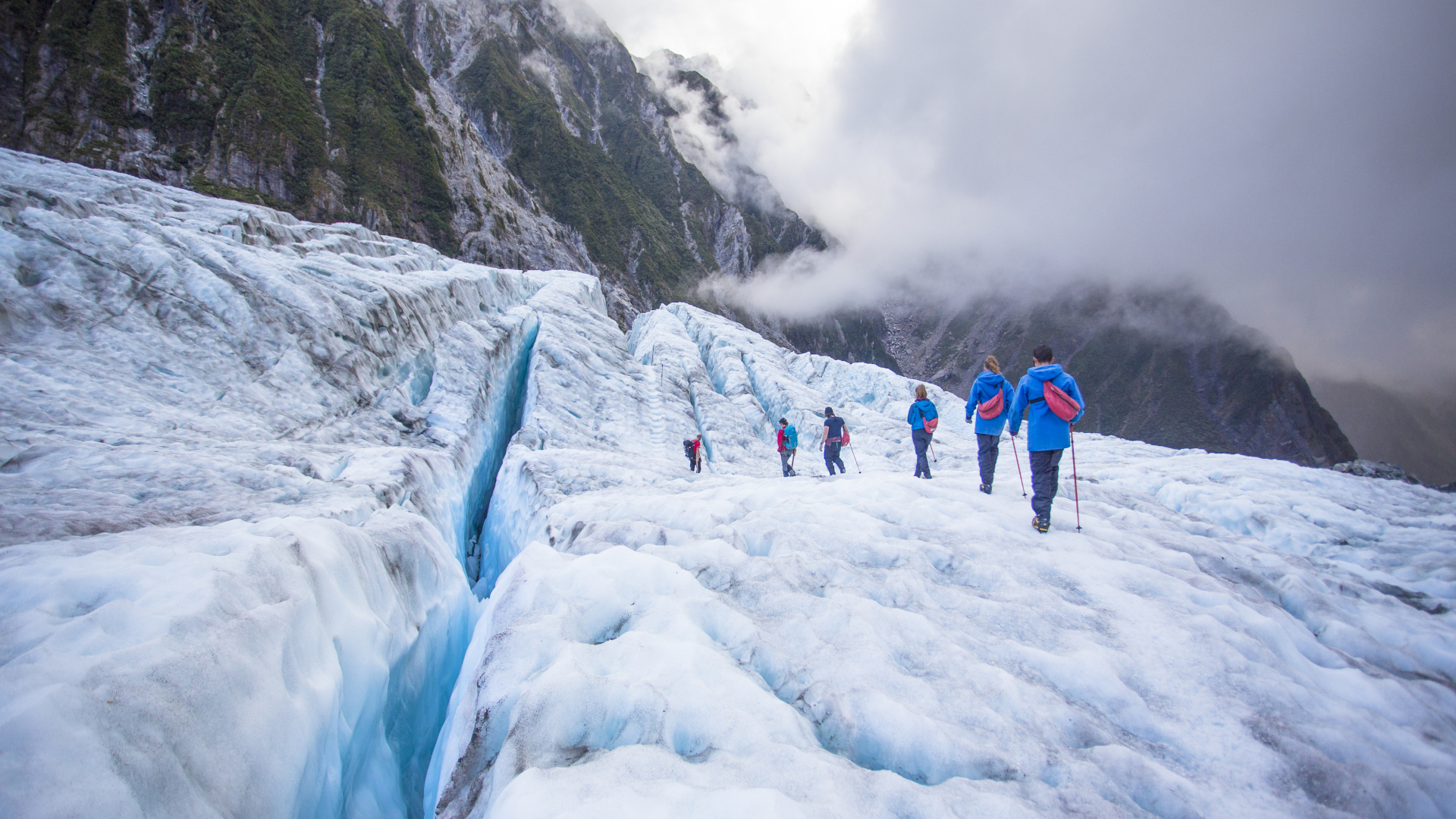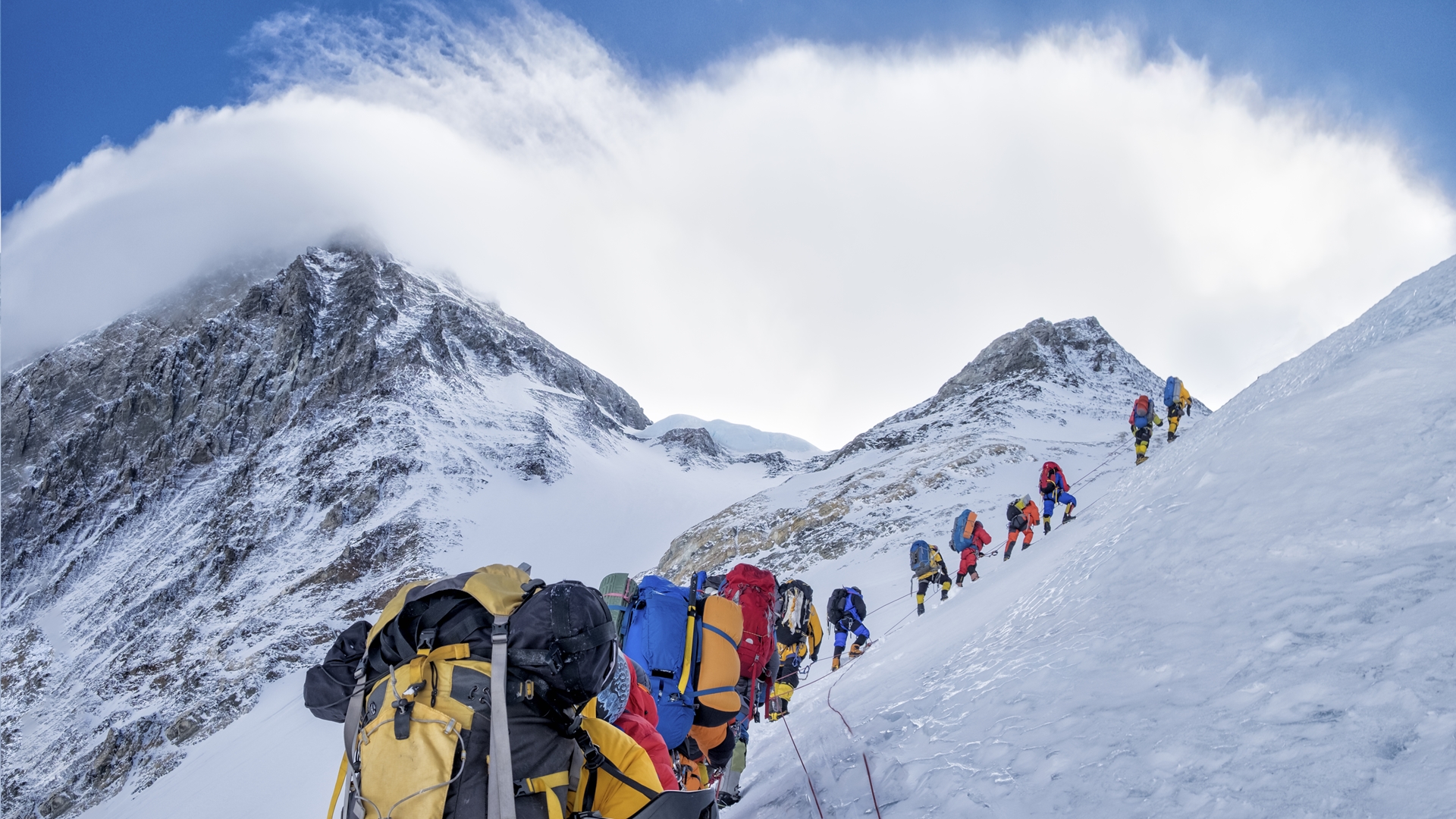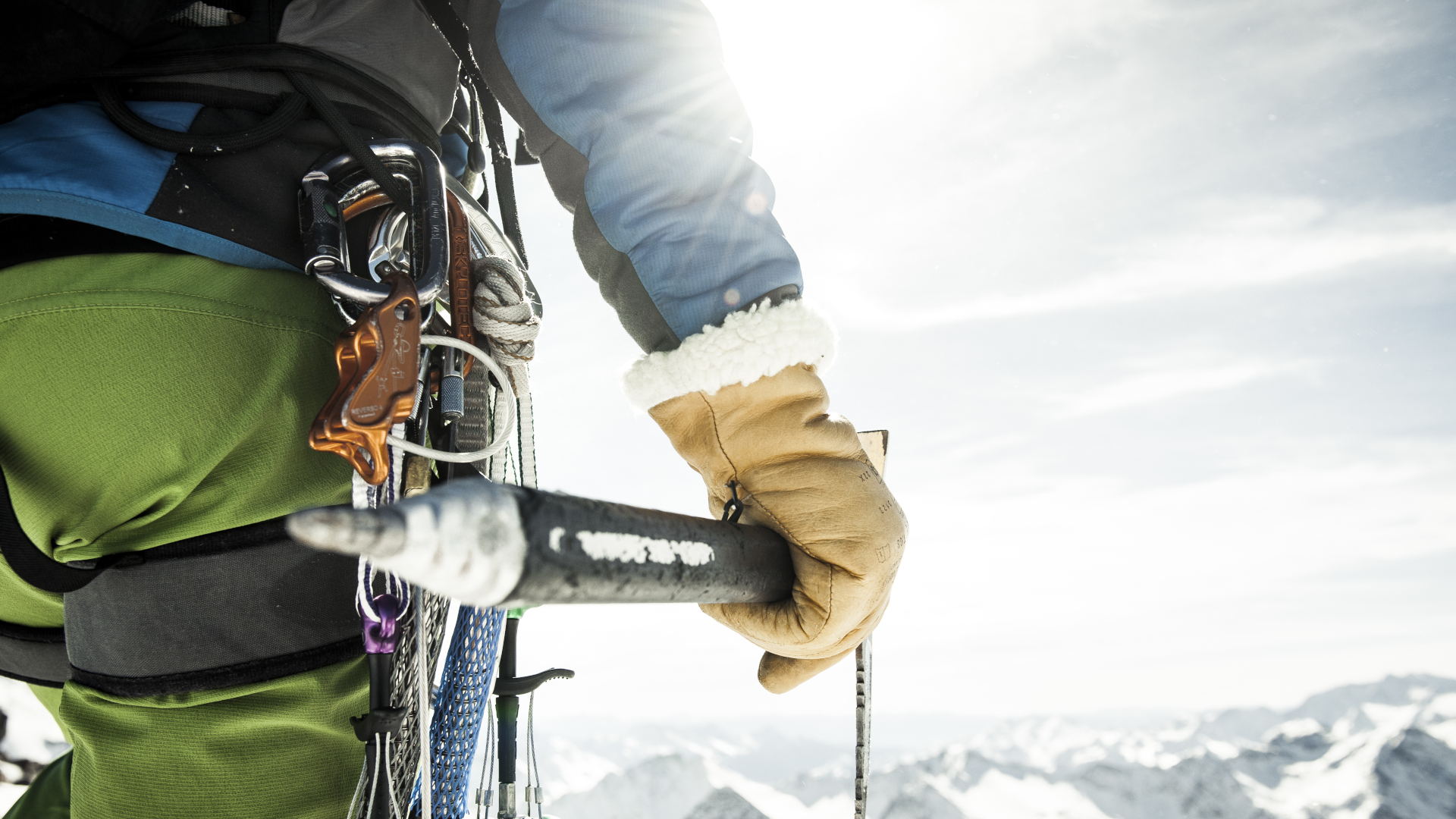What is mountaineering?
We explain everything you need to know about ascending big peaks against all odds

There are lots of different ways to describe getting to the top of a mountain. Sometimes, people who ascend the world’s peaks are called climbers while other times, they’re just plain old hikers. Then you’ve got the elite-sounding class of people called “mountaineers.” But what is mountaineering exactly? And how do you know if you’re preparing for a hike or a mountaineering expedition? In this article, we explain everything you need to know about ascending big peaks against all odds.
What is mountaineering?
Mountaineering is an alpine activity that at its root involves climbing to the highest point of mountains – or at least attempting to – for pleasure. It might sound a lot like hiking by the description, but as we explain in our article on mountaineering vs hiking, while hiking is limited to ascending a hill or mountain on foot wearing hiking boots, mountaineering takes you into higher alpine zones or more challenging winter environments where you're likely to encounter snow and ice as well as rock.
For this reason, though mountaineering always involves some hiking, it also incorporates technical activities such as rock climbing, ice climbing and skiing – basically whatever the terrain requires – to reach the summit. This also means that you’re more likely to spend nights on the mountain and for bigger peaks, it’s common to set up your tent at base camp and take days, weeks or even months on the approach. Alpinism is a fast and light approach to mountaineering, involving the pursuit of big mountains with a more stripped back approach than expedition mountaineering.

There is nothing new about humans climbing mountains – famously, the mummified remains of a man were discovered in the Ötztal Alps in 1991 at an elevation of 10,530 ft. Nicknamed The Iceman, archeologists believe that he was born during the Copper Age, over 5,000 years ago.
However, in the 18th century, scientists started to express a growing interest in climbing mountains for sport, such as Mont Blanc in the Alps. By 1870, all summits in the Alps had been successfully conquered and mountaineering had become a flourishing sport in Britain. With the founding of the Alpine Club in 1857, mountaineers started to set their sights beyond the Alps and towards more challenging ranges like the Himalayas.
The most famous mountaineering feat in human history took place on the morning of May 29th, 1953, when climbers Edmund Hillary and Tenzing Norgay made the first known summit of Mount Everest, the world’s tallest mountain. Since then, new records continue to be set atop the world’s highest peaks, with Britain’s Alison Hargreaves the first woman to climb Everest without oxygen, Reinhold Messner and Richard Bass taking on the Seven Summits and Nepal’s Nims Purja climbing all 14 peaks over 8,000m in a single year.

What are the three golden rules of mountaineering?
As we’ve mentioned, mountaineering doesn’t have a ton of rules – you essentially do what it takes to reach the top. However, there are three unofficial “golden rules” of mountaineering that are repeated in mountain climbing circles almost like a mantra:
All the latest inspiration, tips and guides to help you plan your next Advnture!
“It's always farther than it looks, it's always taller than it looks and it's always harder than it looks.”
The crux of these rules is that preparation is key for mountaineering, it is never easy and there is a degree of inherent risk involved in this activity.

What are the dangers of mountaineering?
By nature, mountaineering tends to be adventurous and involves some risk. You will often be exploring in areas of high altitude (above 8,000ft) and even extreme high altitude (above 18,000 feet) so altitude sickness and exposure are common hazards of mountaineering and acclimatization is required.
Another risk of mountaineering is avalanches, which are common at high altitude due to an abundance of snow and ice, freeze-thaw cycles and high winds. In 2014, the deadliest avalanche in Everest’s history claimed 25 lives.
Even without avalanches and high altitude, the weather and terrain conditions add plenty of danger to mountaineering. Temperatures at high altitudes are often below freezing, leaving you at risk for cold-related conditions like hypothermia and frostbite, while deep snow and ice can make travel treacherous and falls more serious. Snow structures like crevasses and cornices can also increase your risk of life-threatening falls. Extreme weather conditions can also contribute to whiteout conditions, making it difficult to navigate.
All of this said, people go mountaineering every day and many come back to base camp very much alive. The important lesson here is to take safety seriously, and understand that mountaineering requires technical expertise, experience, skill and a lot of gear.

What gear do you need for mountaineering?
Exactly what gear you need for mountaineering will vary a little by expedition, but in general you’ll want to dress in winter hiking layers no matter what time of year you’re going, bring navigation tools like a map and compass, and of course if you’re camping, you’ll need items like a tent, sleeping pad, sleeping bag and camping stove.
You’ll also require the following gear for most mountaineering trips to ensure your safety:
- Winter hiking boots or mountaineering boots
- Crampons
- Helmet
- Ice axe
- Harness and belay device
- Climbing ropes
- Carabiners
Naturally, you’ll need to know how all of this gear works and when to use it, so it’s highly advised to take some mountaineering skills clinics, such as those offered at the Arc’teryx Alpine Academy, and to go out with a guide for your first few expeditions.
Julia Clarke is a staff writer for Advnture.com and the author of the book Restorative Yoga for Beginners. She loves to explore mountains on foot, bike, skis and belay and then recover on the the yoga mat. Julia graduated with a degree in journalism in 2004 and spent eight years working as a radio presenter in Kansas City, Vermont, Boston and New York City before discovering the joys of the Rocky Mountains. She then detoured west to Colorado and enjoyed 11 years teaching yoga in Vail before returning to her hometown of Glasgow, Scotland in 2020 to focus on family and writing.

